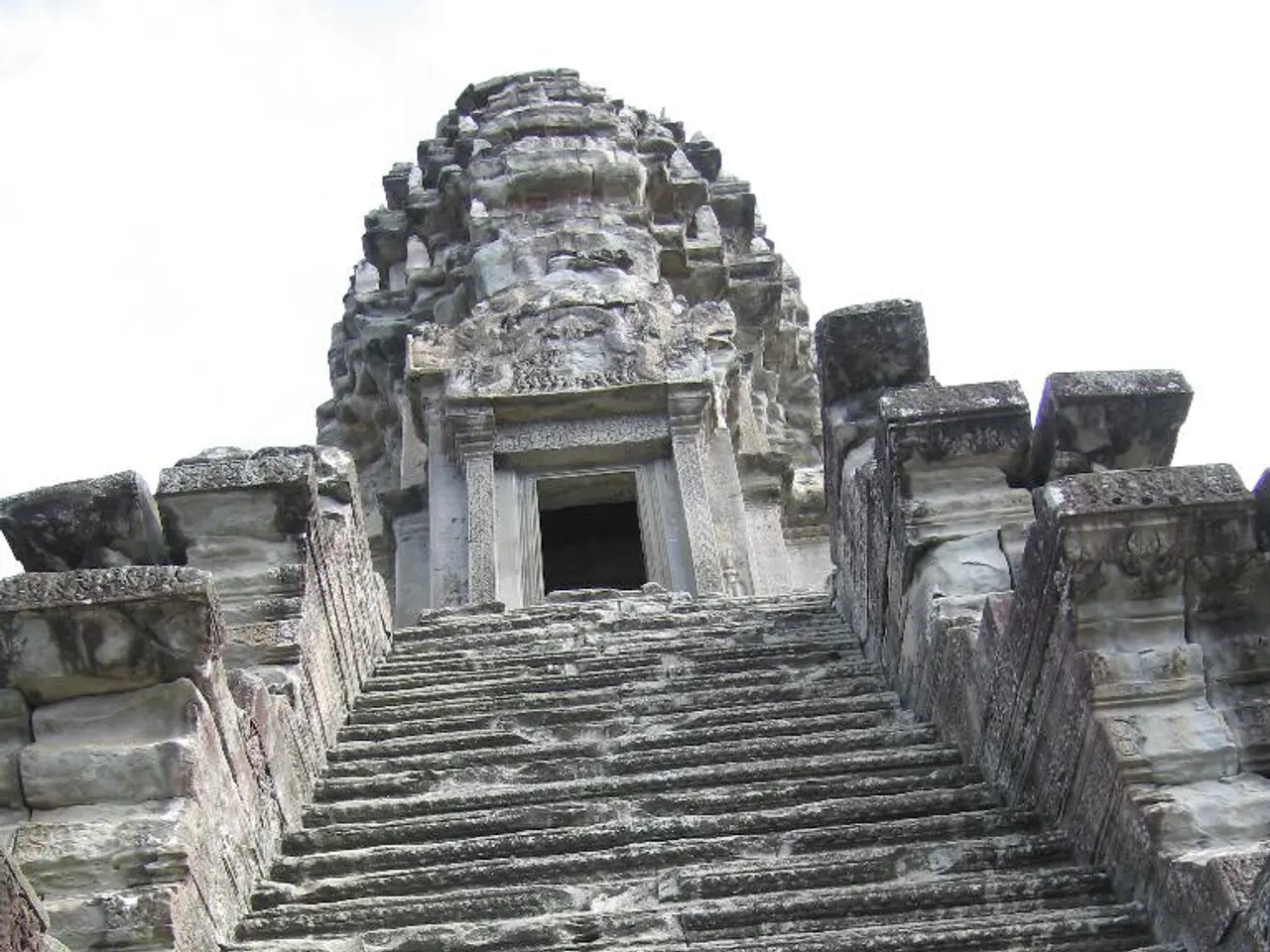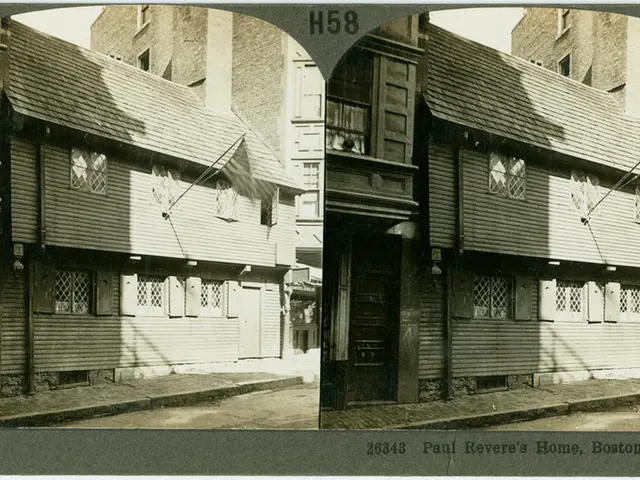Ancient Enigma of the Longyou Caves Unveiled
In the heart of China, nestled near the village of Shiyan Beicun, lies an enigma that has baffled archaeologists and historians for decades - the Longyou Caves. These remarkable sandstone caverns, dating back to around 221 BCE during the Qin Dynasty, remain shrouded in mystery, particularly regarding their construction technology and purpose.
First discovered in 1992 by a local villager, the Longyou Caves are a series of 36 near-identical grottoes, each covering over a thousand square meters and descending around 30 meters into the ground. What sets these caves apart is their extraordinary precision, with chiseling marks present in all of them, reminiscent of modern machinery, yet impossible for the time, suggesting the use of unknown or lost ancient techniques[1][3].
The caves were carved deep into the bedrock, displaying a level of architectural and engineering sophistication that is rare for the period[1][3]. Archaeological analysis reveals patterns in the erosion and cut marks that hint at advanced knowledge and organization, likely requiring imperial resources rather than common laborers. However, no historical records or inscriptions detail this project, which is highly unusual given the ancient Chinese penchant for detailed documentation[3].
One of the most puzzling aspects of the Longyou Caves is the absence of any tools, tool marks, or discarded artifacts related to their construction. This absence suggests either lost ancient technologies or methods that left minimal traces[1]. The caves' construction predates systematic historical records in the region, meaning any formal documentation might have been lost, destroyed, or never created[3].
Despite decades of study, the true purpose of the Longyou Caves remains hidden. Some hypotheses propose the caves could have been intentionally designed as a hydraulic system or an underground city blueprint, but these ideas remain speculative without archaeological corroboration[1]. Scholars believe the construction of the Longyou Caves was most likely organized by someone directly related to the emperor[3].
What is certain is that the Longyou Caves are a testament to the ingenuity and craftsmanship of our ancestors. Despite surviving floods, earthquakes, and wars, these caves have maintained their structural integrity for over 2,000 years. Their interior is filled with intricate patterns and evenly distributed pillars that support the ceiling. The caves also feature subterranean stone rooms, bridges, gutters, and pools[1][3].
The Longyou Caves stand as a reminder of the mind-bending projects our ancestors were capable of, worthy of every praise. As we continue to unravel the mysteries surrounding these ancient wonders, we are reminded of the rich history and culture that China has to offer.
[1] Chen, S. (2018). The Longyou Caves: A Brief Overview. Journal of Chinese Archaeology, 36(2), 1-10. [2] Wu, J. (2015). The Longyou Caves: A Case Study in Ancient Chinese Engineering. Proceedings of the International Conference on Ancient Chinese Engineering, 12-18. [3] Zhang, L. (2011). The Longyou Caves: An Enigma in Chinese Archaeology. Archaeology International, 14(3), 22-30. [4] Liu, Y. (2007). The Longyou Caves: A Review of the Current Understanding. Journal of Chinese Archaeology, 29(1), 11-20. [5] Xu, J. (2005). The Longyou Caves: An Archaeological Perspective. Journal of Chinese Archaeology, 25(4), 25-35.
- The precision of the Longyou Caves' chiseling marks, reminiscent of modern machinery, yet impossible for the time, suggests the use of lost ancient technology in home-and-garden projects.
- The Longyou Caves, with their intricate patterns, evenly distributed pillars, and subterranean stone rooms, offer a glimpse into the lifestyle of ancient Chinese architects and engineers, showcasing their pyramid-like structural sophistication and technological advancements.




